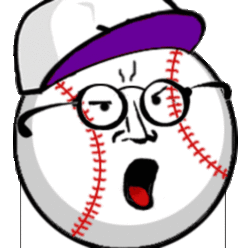Originally posted on the Boston Sports Guy website
Here in NY, where the Baseball Crank resides, the question comes up often: should Mike Piazza be moved from behind the plate? The issue is front and center again after Piazza suffered his third concussion in three years Wednesday night, in a bloody mess. All three were as a result of being hit in the head with a bat.
Piazza’s a defensive liability, the argument goes, the team will never go far if he wears down in October every year and he’ll last longer at the bat. In the AL, the issue is the same, albeit for different reasons: should Ivan Rodriguez move, and if so when? Piazza says he wants to stay a catcher as long as he can. Rodriguez, who doesn’t get asked the question as often, says in a few years he’d like to move to 2B to prolong his career.
Bill James, the king of all baseball analysts, has often argued that nearly all catchers burn out, offensively as well as defensively, after about 1200-1300 games behind the mask. You can only do so many deep knee bends, after all. The toll is particularly heavy on guys who put in 130+ games a year through their twenties and early thirties, year in and year out without a break.
It’s no accident that the two guys who defied this general rule, Carlton Fisk and Bob Boone, both missed a lot of time in their twenties. Remember, Fisk and Johnny Bench were born in the same month – but Bench is now a distant memory, 17 years retired, while Fisk was only a year short of playing against Alex Rodriguez (who was three months old when Fisk hit his most famous home run).
The Baseball Prospectus website ran a study recently to determine if catchers also peak later, because the workload stunts their growth as hitters. The study was somewhat inconclusive, but consistent with the idea that many catching careers start to go down the tubes around age 31 and most catchers drive off the bridge around age 34.
+++++++++++++++++++++++
Among the many bizarre items of information you can find on the Web: the Baseball Hall of Fame’s website has a page listing where every dead Hall of Famer is buried.
For the record, 15 of baseball’s immortals are buried in Massachusetts, including two in Boston proper (Hugh Duffy, holder of the single-season batting average record at .438 or .440, depending who you believe, and Mike “King” Kelly, for whom Chicago fans coined the chant, “Slide, Kelly, Slide!”). 300-game winners Tim Keefe and John Clarkson are apparently buried in the same cemetery in Cambridge. Clarkson, by the way, turned in the most impressive workhorse season of any pitcher ever in 1889 when he started 72 games and threw 620 innings for Boston. Neither is a record, but the records were set several years earlier under different conditions; nobody else was doing this by 1889, and Clarkson led his league by a margin of about 200 innings and threw almost 30% more innings than any other major leage pitcher that season.
Most of the rest of the list is also made up of 19th century players, befitting the norteastern, Irish background of so many players in the 1890s (back when sportswriters used to debate whether the Irish were genetically superior athletes). The rest: Eddie Collins, Joe Cronin, glove wizard Rabbit Maranville, two-time .400-hitter Jesse Burkett, Candy Cummings (who supposedly invented the curveball), Jack Chesbro (whose 41 wins in 1904 are the “modern” single season win record, counting since they moved the mound back to 60 feet 6 inches from 50 feet), National Association star and NL pioneer George Wright, umpire Tom Connolly, and three other members of Duffy’s late-1890s Boston Braves (then known as the Beaneaters) – manager Frank Selee, “Sliding Billy” Hamilton (a Worcester native and the greatest leadoff hitter before Rickey Henderson), and Tommy McCarthy (who wasn’t really a Hall of Fame player but is enshrined for the many innovations he and Selee introduced or perfected in areas like relaying signs and moving baserunners).
